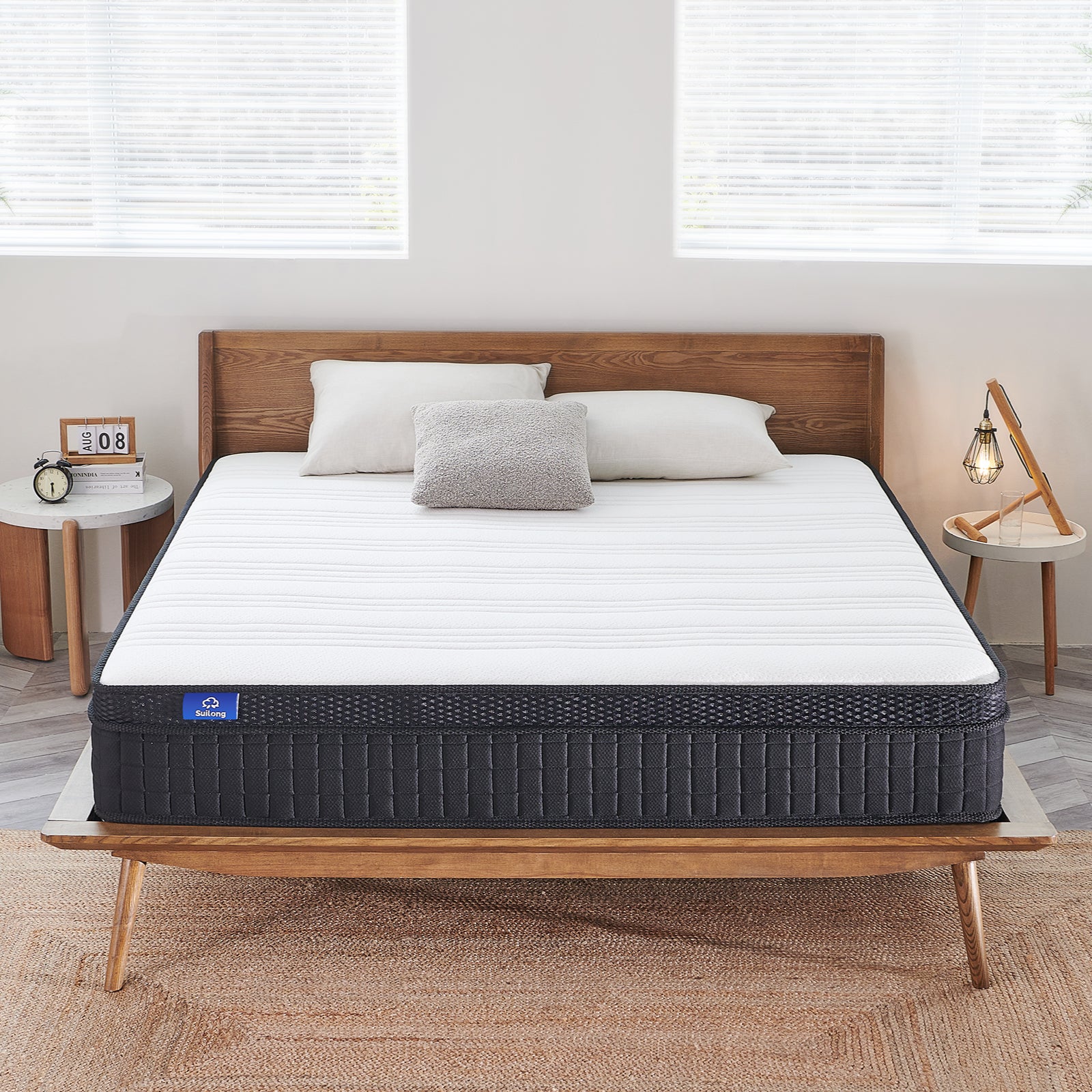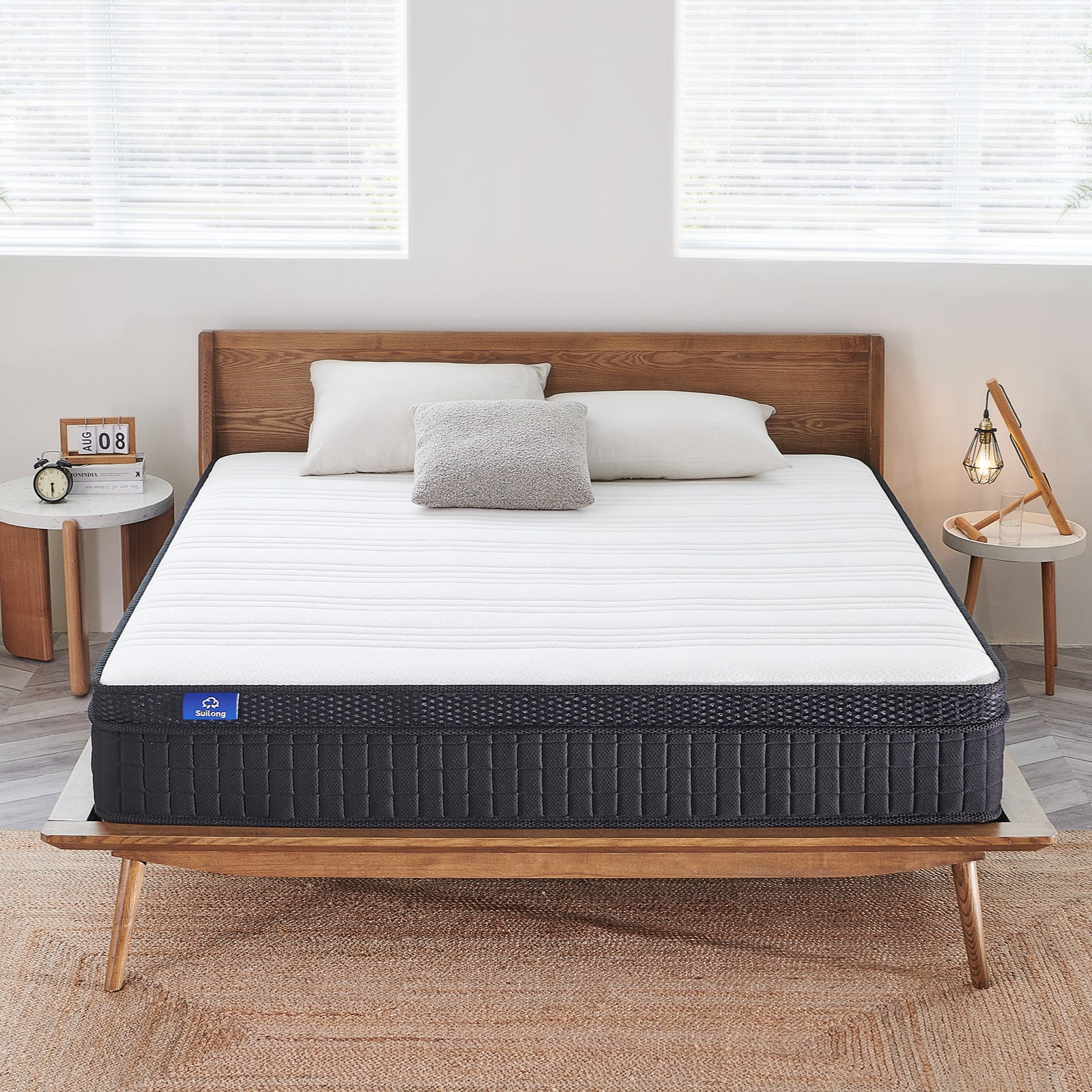How to Choose a Bed Size For Your Room

Discover the perfect fit for restful nights with our expert guide on choosing the right bed size for your room from mattress in a box queen to king size mattress and box spring.
1. Introduction
Choosing the right size bed is like carefully selecting a work of art for your bedroom; not only is it about the quality of your sleep, but it also directly affects the overall feel and functionality of the room. As a seasoned expert in the mattress industry, I understand the importance of a good bed. So how do we decide which size bed is best for our room? Let's explore this in depth.
1.1 The Importance of Sleep
A good night's sleep not only refreshes us, it also boosts immunity and reduces the risk of illness. And a properly sized bed is the key to quality sleep. Imagine sinking into a twin memory foam mattress that conforms to your body and supports your every curve - it's a wonderful feeling.
1.2 Room Layout Considerations
The layout of the room is an important factor in determining the size of the bed. We need to consider the length and width of the room to ensure that the bed is positioned in such a way that it doesn't prevent doors and windows from opening and closing, and doesn't squeeze out other necessary furniture space.
1.3 Influence of Personal Lifestyle
The choice of bed should also take into account an individual's lifestyle. For example, someone who likes to read or watch TV in bed may prefer a larger bed, such as a king size mattress and box spring, which offers plenty of space to support your activities.
Now that you understand the importance of choosing the right size bed, we'll dive into how to choose a mattress for different room sizes. Follow me into the world of choosing a bed size.
2. Bed Size Selection Principles
Finding the bed that perfectly matches your bedroom requires an understanding of the different bed sizes and the advantages of each of them. Let's unravel the mystery of bed size selection step by step.
2.1 Bed Size Types and Standard Sizes
There are various sizes of beds on the market, from single to super king-size, and each comes in a standard size. For example, the standard size for a mattress in a box queen is usually 60 inches wide and 80 inches long, making it ideal for singles or couples.
2.2 Matching room size to bed size
When picking a bed size, you need to measure your room and leave at least 2 to 3 feet of space so you can move around freely. For smaller rooms, a full size mattress in a box may be a smart choice that won't take up too much space while providing enough comfort.
2.3 Bed size and white space principles
In the bedroom, the size of the bed should be in proportion to the room. Avoid choosing a bed that is too big to ensure that the room has enough white space to make the whole space look more open and cozy.
If you already have a basic understanding of how to choose the right bed size according to the size of the room, then what follows will be especially suitable for those who have small bedrooms. Below, we will reveal some useful tips for choosing a bed in a small space. Come with me and let's find out.
3. Strategies for choosing a bed for a small bedroom
For those small bedrooms with limited space, choosing the right bed is especially important. The right choice can make your space both functional and comfortable, even in an environment with less square footage.
3.1 Space-Saving Bed Recommendations
Space-saving bed models are especially critical in small bedrooms. For example, a bed with drawers or a mattress in a box can save storage space, while a high low bed or wall bed can save space when not in use. These innovative designs not only make the most of limited space, but also add character to the bedroom.
3.2 Bed placement and room layout tips
Bed placement tips are crucial for small bedrooms. Generally speaking, placing a bed against a wall will maximize space, while placing it under a window or beam will make the room appear more spacious. Smaller bedrooms often require more clever design ideas for optimal use of space.
3.3 Visual Considerations
In small bedrooms, color choices and layout techniques can produce a visually magnifying effect. Light color tones, large mirrors and appropriate lighting can make the space appear larger. And the right décor, such as wall paintings or wallpaper, can also add character to a room without detracting from the sense of space.
Now, let's turn to another important topic: bed placement and orientation. This is not only about aesthetics, but also about the quality of sleep. Stay with me as we explore how to place your bed in the best possible position.

Suilong Nimbus
12 Inch Hybrid Mattress
Look no further than the Suilong Nimbus 12-inch Hybrid Mattress.
Buy Now4. Bed placement and orientation choices
The position of your bed is crucial to the quality of your sleep and the overall feel of your bedroom. Here are some professional tips to help you determine the best placement for your bed.
4.1 Avoid convective influences from doors and windows
Beds should not face doors or windows directly, as this can cause direct air currents to be felt during sleep, which may affect the quality of sleep. Also, beds facing directly to doors and windows may be affected by light, which may lead to waking up too early in the morning.
4.2 Consideration of Bed Head Orientation
The orientation of the bed head is also important. According to feng shui, the head of the bed should face a direction that brings calm and positive energy. Modern sleep science suggests that a bed facing north can help the body relax better.
4.3 Centering the bed
When possible, placing the bed in the center of the room can enhance the symmetry and balance of the room. This not only helps with sleep, but also makes the room look more harmonious.
Making the bed the focal point of the room is a good choice, but how do you make sure the size of the bed matches the room? Next, I'll give some practical advice to help you avoid choosing an inappropriate bed size. Please join me as I continue to explore this in depth.
5. Avoid choosing an inappropriate bed size
Making a mistake in choosing a bed size can lead to a host of problems, from compromising the quality of your sleep to taking up too much bedroom space. Here are suggestions on how to avoid these common mistakes.
5.1 Measurement and modeling
Before purchasing a bed, it is essential to accurately measure the dimensions of your room. Additionally, you can use cardboard or tape to simulate the dimensions of the bed on the floor so that you can visualize how the bed will fit in the room.
5.2 Leave enough room to move around
Make sure to leave at least 24 to 30 inches of space around the bed for getting in and out of bed and changing sheets. A bed that is too large may make it inconvenient for you to move around the room.
5.3 Height matters too
Not only should the length and width of the bed be appropriate, but the height should not be overlooked. Especially for small bedrooms, a bed that is too high can make the space seem cramped. A mattress in a box is usually of the right height and is easy to carry and install.
The right bed size can do wonders for your sleep, so let's move on to the next topic: how to choose the best bed style for your bedroom. Stay tuned to find out how to combine practicality and style.
Upgrade your slumber sanctuary with our top tips for the ideal bed whether it's a memory foam mattress or a full size mattress in a box, we ensure your choice spells comfort and style.
FAQs
Q1: What's the recommended bed size for a small bedroom?
A1: For small bedrooms, it's best to opt for a twin, twin XL, or full-size bed to maximize space. Consider beds with built-in storage or a "mattress in a box" option for efficiency.
Q2: How do I know if a bed is too big for my room?
A2: Ensure there's at least 24 to 30 inches of space around the bed for movement. If this clearance isn't possible, the bed is likely too big for the room.
Q3: Can a bed's placement in a room affect sleep quality?
A3: Yes, the bed's placement can impact sleep. Avoid placing the bed in direct line with doors or windows to minimize airflow disruptions and light disturbances.
Q4: Should your bed face the window or door?
A4: It's not recommended to have your bed facing directly towards the door or window due to potential drafts and light interference, which could affect sleep quality.
Q5: What are some space-saving bed options for small rooms?
A5: Loft beds, murphy beds, and beds with storage drawers are great space-savers. A "mattress in a box queen" size can also be a convenient option that doesn't compromise on comfort.
Q6: How does bed height impact room aesthetics and practicality?
A6: In smaller rooms, a bed that's too high can overwhelm the space. Opt for a moderate height bed, like a "mattress in a box", which can make the room feel more open.
Q7: Are there specific bed types recommended for small spaces?
A7: Yes, "twin memory foam mattresses" and "full-size mattresses in a box" are excellent for small spaces due to their compact size and convenience.
Q8: How can I make a small bedroom look bigger with the right bed?
A8: Choose a bed with a lower profile and opt for lighter colors. Using mirrors and proper lighting can also create the illusion of a larger space.
Q9: How do I choose the right bed orientation for good feng shui?
A9: The bed should be positioned for a clear view of the door but not in direct alignment with it. North-facing beds are thought to offer a calming energy.
Q10: Is it better to have a king-size bed or two twin beds in a guest room?
A10: It depends on the room size and your guests' needs. A "king-size mattress and box spring" is luxurious if space allows, while two twins offer flexibility for varying guest scenarios.


















